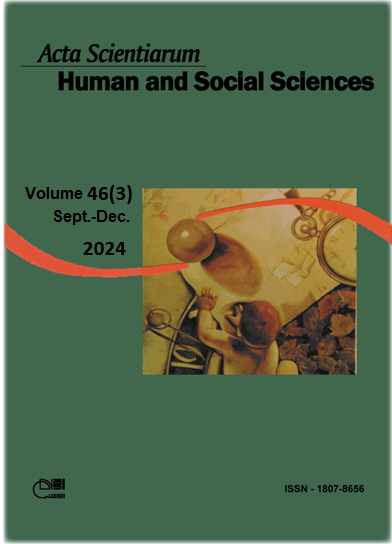Mythology: Moritz and the Logic of Fantasy
Abstract
We aim to present Karl Philipp Moritz's thoughts on mythology as expressed in his Doctrine of Gods [Götterlehre] of 1791. Despite being relatively unknown, the author has been acknowledged as an important figure in the aesthetic thought of the period by authors such as Goethe, Schiller, and Schelling. We would like to analyze Moritz's novel perspective on approaching mythological creations, understood as a language of fantasy, distinct from the usual allegorical and historical interpretations. This approach, emphasizing the autonomous nature of mythology, is grounded, as we argue, in the aesthetic thought he developed in earlier years. Here, the assertion of a concept of a perfect and self-contained work of art, and the notion of an artistic creation whose organic formative force precedes subjectivity, constitute complementary poles of a radical thought on the autonomy of art, which, not coincidentally, seems to find its fullest expression precisely in Moritz's conception of mythology. Lastly, this intricate relationship between aesthetics and mythology reveals a new way of thinking, or, if we prefer, a new logic, critical of the determinations of traditional metaphysics and much closer to a symbolic thought.
Downloads
References
Referências
Blumenberg, H. (1990). Wirklichkeitsbegriff und Wirkungspotential des Mythos. In M. Fuhrmann (Ed.), Terror und Spiel. Probleme der Mythenrezeption (p. 11-66). Paderborn, DE: Wilhelm Fink.
Boulby, M. (1979). Karl Philipp Moritz: at the fringe of genius. Toronto; Buffalo; London: University of Toronto Press.
Fontenelle, B. (1825). De l‘origine des fables (Oeuvres: Tome Quatrième). Paris, FR: Salmon, Libraire-Éditeur.
Gockel, H. (1981). Mythos und Poesie: zum Mythos begriff in Aufklärung und Frühromantik. Frankfurt am Main: Tübingen.
Goethe, J. W., Michel, C., & Dewitz, H.-G. (1993). Italienische Reise. Teil I (Sämtliche Werke, Briefe, Tagebücher und Gespräche ‒ Band XV/1). Frankfurt am Main: Deutscher Klassiker Verlag.
Guilbert, P. (1999). Welche neuzeitlichen Strategien für die Rettung der antiken Mythologie?: Vergleich von drei, Handbüchern zur Götterlehre um 1790: K. W. Ramler - Ch. H. Heyne / M. G. Hermann - K. Ph. Moritz. Goethe Yearbook, 9, 186-221.
Jaeger, C. F. W. (1830). Translator’s Preface. In K. P. Moritz (Ed.). Mythological fictions of the Greek and Romans (p. v-vi). New York, NY: Carvill.
Kerényi, K. (1955). Gedanken über die Zeitmäßigkeit einer Darstellung der griechischen Mythologie. Studium Generale, 8, 268-272.
Moritz, K. P. (2018). Schriften zur Mythologie undf Altertumskunde. Teil 2, Götterlehre und andere mythologische Schriften (M. Disselkamp, Ed.). De Gruyter. DOI: https://doi.org/10.1515/9783110545487
Moritz, K. P. (2022). Ensaios de Karl Philipp Moritz: Linguagem, arte e filosofia (J. F. Sabino, Trad.). São Paulo, SP: Editora USP.
Schelling, F. W. J. (2010). Filosofia da arte (M. Suzuki, Trad.). São Paulo, SP: Editora da Universidade de São Paulo.
Schreiber, E. (2012). The topography of modernity: Karl Philipp Moritz and the space of autonomy. Ithaca, NY: Cornell University Press.
Schrimpf, H. J. (1972) Die Sprache der Phantasie. In H. O. Burger (Ed.). Begriffsbestimmung der Klassik und des Klassischen (p. 272-305). Darmstadt, DE: Wissenschaftliche Buchgesellschaft.
Suzuki, M. (2005) A ciência simbólica do mundo. In A. Novaes. (Org.). Poetas que pensaram o mundo (p. 199-224). São Paulo, SP: Companhia das Letras.
Todorov, T. (1996). Teorias do símbolo (E. A. Dobránszky, Trad.). Campinas, SP: Papirus.
Torres Filho, R. R. (2004). Ensaios de filosofia ilustrada. São Paulo, SP: Iluminuras, 2004.
DECLARATION OF ORIGINALITY AND COPYRIGHTS
I Declare that current article is original and has not been submitted for publication, in part or in whole, to any other national or international journal.
The copyrights belong exclusively to the authors. Published content is licensed under Creative Commons Attribution 4.0 (CC BY 4.0) guidelines, which allows sharing (copy and distribution of the material in any medium or format) and adaptation (remix, transform, and build upon the material) for any purpose, even commercially, under the terms of attribution.
Read this link for further information on how to use CC BY 4.0 properly.























